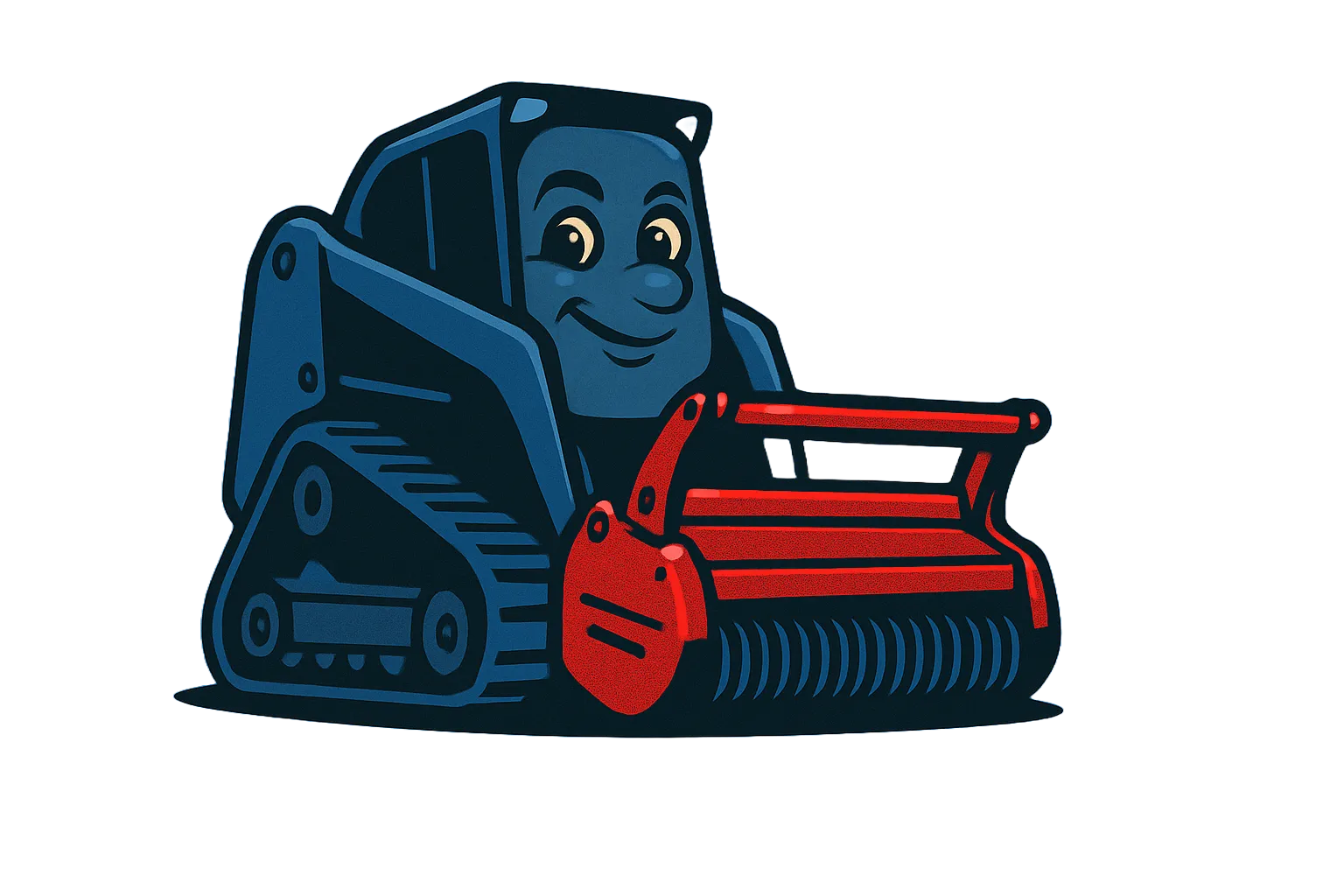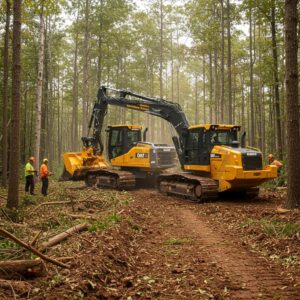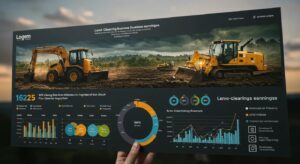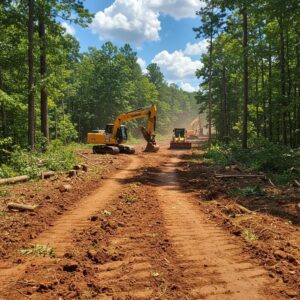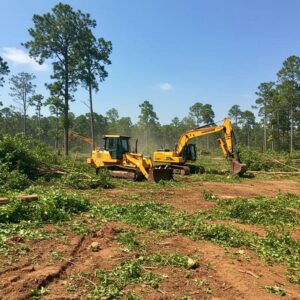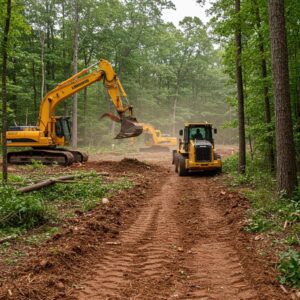How to Get Forestry Mulching Leads: Proven Strategies for Growing Your Mulching Business
Generating a steady pipeline of forestry mulching leads hinges on understanding who needs vegetation management, deploying targeted marketing channels, and refining follow-up systems that convert prospects into projects. Over the past five years, demand for eco-friendly land clearing solutions has grown by more than 20 percent as municipalities, developers, and private owners seek efficient vegetation control. This guide maps the process of identifying ideal clients, harnessing digital and traditional marketing tactics, leveraging lead generation services, optimizing your website, and implementing CRM workflows. You will discover how SEO, paid ads, social media, referrals, CRM integration, and performance analytics come together to deliver high-quality leads and sustainable growth.
We begin by profiling the ideal customer segments for forestry mulching services, then explore the most effective digital marketing strategies including SEO, Google Ads, social media, and email nurturing. Next, we cover traditional marketing techniques such as referrals, networking events, and direct outreach. After that, we evaluate the benefits and considerations of third-party lead services before diving into website optimization tactics with project galleries and local SEO. We then outline CRM features and communication strategies to manage and convert leads. Finally, we examine key performance indicators and analytics methods to measure success and adapt your lead generation approach to evolving market trends.
Who Are the Ideal Clients for Forestry Mulching Services?
Forestry mulching services provide eco-friendly land clearing by grinding trees, brush, and stumps into reusable mulch. This method reduces hauling costs, controls erosion, and enhances soil health, making it attractive to a range of property stakeholders. For instance, a private landowner seeking overgrowth removal benefits from faster turnaround and reduced debris, while a municipality prioritizes vegetation management along roadways for safety and environmental compliance. Understanding these client segments helps contractors tailor messaging and outreach efforts to match each group’s specific needs.
The table below highlights core client categories, their primary vegetation challenges, and how mulching technology addresses those challenges.
| Client Type | Vegetation Challenge | Mulching Benefit |
|---|---|---|
| Residential Landowners | Overgrown wooded lots and brush | Immediate clearance and site cleanup with minimal landfill use |
| Land Developers | Site preparation for construction | Enhanced grading readiness and reduced erosion risks |
| Construction Companies | Right-of-way maintenance and access | Rapid corridor clearing and improved safety |
| Municipalities | Roadside brush control and fire breaks | Sustainable vegetation management and erosion control |
Each client segment values timely project completion and minimal environmental impact. Profiling these audiences lays the groundwork for targeted marketing strategies that speak directly to their vegetation management priorities.
What Types of Property Owners Need Forestry Mulching?
Property owners facing unmanaged growth, wildfire risk zones, or invasive species removal are prime candidates for forestry mulching. These owners often include rural estate holders, recreational land custodians, and agricultural operators looking to reclaim pastures from thick brush. By converting overgrowth into nutrient-rich mulch, contractors help landowners improve pasture quality and reduce fuel load for wildfires.
Key property owner scenarios include:
- Rural estates requiring underbrush removal to open vistas and improve livestock access.
- Ranchers seeking pasture restoration and invasive plant control.
- Recreational landholders maintaining trails and camping areas for safety and aesthetics.
This segmentation clarifies outreach messaging by aligning project benefits—such as soil enrichment, erosion prevention, and wildfire mitigation—with the specific objectives of each owner type. Recognizing these scenarios enables marketing materials and proposals that resonate with property owners’ most urgent land-management issues.
How Do Land Developers and Construction Companies Use Mulching Services?
Land developers and construction firms rely on forestry mulching to streamline site preparation by rapidly clearing vegetation without extensive hauling. Forestry mulchers grind stumps and brush into mulch, leaving a level surface ready for grading and foundation work. This approach reduces equipment transitions and hauling costs while maintaining topsoil stability.
Three main applications for developers and builders:
- Site Prep for New Subdivisions – Clearing wooded parcels to create building lots and infrastructure corridors.
- Road and Utility Corridor Clearing – Establishing access roads and utility trenches with minimal environmental disruption.
- Erosion Control Measures – Applying mulch as a protective layer on slopes to prevent soil erosion during construction phases.
By integrating mulching into early project stages, developers shorten timelines and minimize earthwork expenses. Construction companies value contractors who deliver consistent results and ensure compliance with local erosion and stormwater regulations.
Why Are Municipalities Important Clients for Forestry Mulching Leads?
Municipal clients manage public land and infrastructure, requiring regular vegetation control along roadsides, utility easements, and parks. Forestry mulching provides an efficient solution for maintaining roadside clearances, constructing fire breaks, and controlling invasive species without repeated herbicide applications.
Three municipal applications include:
- Roadside Brush Control – Grinding back encroaching vegetation to improve driver visibility and reduce maintenance cycles.
- Fire Break Construction – Creating defensible buffer zones in high-risk wildfire areas by removing fuel sources.
- Park and Trail Maintenance – Preserving recreational spaces through selective vegetation management that minimizes disturbance.
Securing municipal contracts often involves responding to requests for proposals and demonstrating environmental stewardship credentials. By highlighting reduced chemical usage and soil stabilization benefits, contractors can position forestry mulching as a sustainable choice for public land managers.
What Are the Most Effective Digital Marketing Strategies for Forestry Mulching Lead Generation?
Digital marketing harnesses online channels to attract forestry mulching leads through targeted visibility and engagement. Combining search engine optimization, paid advertising, social media outreach, and email nurturing creates a comprehensive funnel that moves prospects from awareness to contact. In October 2025, data shows that multi-channel digital campaigns deliver up to 35 percent more qualified leads compared to single-channel efforts.
A balanced digital strategy includes four pillars:
- SEO: Optimize website content and local listings to rank for terms like “forestry mulching website” and “land clearing services near me.”
- Google Ads: Run targeted pay-per-click campaigns focusing on high-intent keywords and geographic parameters.
- Social Media: Share before-and-after images and educational videos on platforms frequented by property managers and developers.
- Email Marketing: Automate nurture sequences that provide case studies and project estimates, guiding leads toward a consultation.
Integrating these tactics reinforces brand authority, extends audience reach, and fosters ongoing engagement with prospective clients.
How Can SEO Improve Your Forestry Mulching Business Visibility?
SEO (Search Engine Optimization) enhances organic search presence by aligning website content with user search queries, improving technical performance, and building local citations. For forestry mulching contractors, ranking for keywords like “forestry mulching jobs” and “mulching crews near me” helps capture high-intent traffic from property owners and developers seeking immediate services.
Key SEO components include:
- On-Page Optimization: Craft service pages with entity-rich descriptions, clear headings, and embedded project galleries.
- Local SEO: Ensure consistency in business name and service area across online directories while gathering positive reviews.
- Technical SEO: Improve site speed, mobile responsiveness, and schema markup for Service and LocalBusiness.
- Content Creation: Publish blog posts on vegetation management tips, case studies, and safety best practices to attract informational searches.
By systematically optimizing these areas, contractors secure top rankings for relevant queries and build sustained organic traffic that converts into leads.
How to Set Up Targeted Google Ads for Forestry Mulching Contractors?
Google Ads allows forestry mulching businesses to bid on high-value keywords and display ads to audiences in specific regions. A well-structured campaign targets search and display networks with ad groups grouped by service type, such as “brush clearing” or “stump grinding.”
Steps to create effective Google Ads:
- Define campaign objectives and budget allocation for search versus display channels.
- Research keyword variations including long-tail queries like “forestry mulching job cost per acre.”
- Write ad copy highlighting unique benefits (e.g., eco-friendly process, quick turnaround).
- Configure geographic targeting to focus on service areas and nearby municipalities.
- Implement conversion tracking on contact forms and phone calls to measure ROI.
Pursuing this structured approach ensures ads reach prospects ready to request quotes, maximizing lead volume and cost-per-acquisition efficiency.
What Social Media Marketing Tactics Work Best for Land Clearing Services?
Social media platforms offer visual storytelling opportunities to demonstrate forestry mulching results and build trust. Land clearing contractors can leverage before-and-after photo albums, short process videos, and customer testimonials to engage audiences on sites like Facebook, Instagram, and LinkedIn.
Top tactics include:
- Posting weekly project highlights with high-resolution images and concise captions.
- Running targeted ad campaigns promoting free site assessments to property owners in your region.
- Hosting live Q&A sessions showcasing machinery capabilities and safety protocols.
- Collaborating with local land management groups or associations for co-branded content.
Consistent social engagement fosters brand recognition among potential clients and drives traffic back to your optimized website, feeding the digital lead funnel.
How Does Email Marketing Nurture Forestry Mulching Leads?
Email marketing nurtures prospects by delivering timely, relevant content that guides potential clients through the decision-making process. After capturing an email via a site estimate request or event signup, automated sequences keep your company top of mind.
Effective email sequence components:
- Welcome Email: Introduces your services, highlights key benefits, and sets expectations for communication.
- Educational Follow-Ups: Provide articles on vegetation management strategies and case studies illustrating ROI.
- Promotional Offers: Share seasonal discounts for site assessments or bundled services to incentivize bookings.
- Testimonial Spotlight: Showcase satisfied client stories with photos and performance metrics.
By methodically educating and reminding leads about your expertise, email nurtures prospects until they are ready to request a formal quote or consultation.
How Can Traditional Marketing and Networking Boost Forestry Mulching Client Acquisition?
Traditional marketing and professional networking build credibility and local awareness by leveraging existing relationships and word-of-mouth referrals. For forestry mulching contractors, combining referral incentives, trade association memberships, and direct outreach amplifies lead generation beyond digital channels.
A blended traditional approach typically includes:
- Developing referral programs that reward satisfied clients for introductions.
- Participating in industry events and local business associations to network with developers and municipal managers.
- Conducting proactive outreach through targeted mailers or site visits to potential landowner prospects.
Integrating these tactics with digital follow-up ensures that in-person leads receive timely email and phone communications, maintaining consistent engagement.
What Referral Programs Drive More Forestry Mulching Leads?
Referral programs incentivize past customers, real estate professionals, and industry partners to recommend your mulching services. Structured rewards motivate advocates to share your company with high-value prospects.
Key referral program elements:
- Offer tiered rewards such as discounted service rates or gift cards for each successful referral.
- Provide shareable referral cards or digital codes that track referred leads to specific advocates.
- Communicate program details via email and on project invoices to ensure visibility.
By formalizing referral incentives, contractors tap into existing networks and amplify lead flow through trusted endorsements.
How to Leverage Industry Events and Local Associations for Networking?
Attending trade shows, forestry conferences, and local contractors’ associations connects you with land developers, municipal officials, and fellow service providers. Face-to-face interactions build rapport and position your business as an expert in eco-friendly land clearance.
Strategies for effective event participation:
- Host live equipment demonstrations to showcase mulcher performance and safety features.
- Deliver a short presentation on soil-friendly vegetation management to educate attendees.
- Exchange business cards and follow up promptly with targeted digital materials.
Combining real-world networking with digital follow-up ensures that event leads transition seamlessly into your email nurture and CRM workflows.
What Are Effective Direct Outreach Methods to Landowners and Developers?
Proactive outreach to property owners and developers involves targeted mail campaigns, cold calling, and personalized proposals. Identifying prospects via county land records or local planning permits helps create a focused list.
Direct outreach best practices:
- Compile a list of recently approved development sites and prioritized acreage.
- Send an introductory postcard highlighting your eco-friendly mulching process and project benefits.
- Follow up with a phone call offering a no-obligation site assessment.
- Provide customized proposals that include site photos, project timelines, and cost estimates.
This combination of personalized mail and phone contact, reinforced by digital follow-up, often yields higher response rates than generic advertising alone.
What Are the Benefits and Considerations of Using Lead Generation Services for Forestry Mulching?
Lead generation services specialize in sourcing and qualifying prospects, saving contractors time on prospecting and initial outreach. These platforms deliver vetted leads directly to your inbox, allowing you to focus on proposals and project execution. However, service quality varies, and cost-per-lead can impact profitability.
Core benefits and considerations:
- Benefit: Access to a larger pool of pre-qualified leads without investing in complex marketing campaigns.
- Consideration: Lead exclusivity—shared leads may generate competition and lower conversion rates.
- Benefit: Automated lead distribution integrates with your CRM for seamless follow-up.
- Consideration: Service fees can erode margins if cost-per-lead is too high relative to average project value.
Evaluating these factors helps contractors determine whether outsourcing lead generation aligns with their growth and budget objectives.
How to Choose a Reliable Forestry Mulching Lead Generation Service?
Selecting a reputable lead service involves assessing lead quality, exclusivity, and integration capabilities. A reliable provider supplies geographic filters, industry-specific lead criteria, and transparent performance metrics.
Selection criteria include:
- Lead filtering by land area size, property type, and project timeline.
- Guarantee of exclusive leads or clear fee structure for shared prospects.
- API or CRM integration options for automated lead imports.
- Reporting dashboard that tracks lead source, status, and conversion history.
Using these criteria ensures that the chosen service delivers high-intent leads tailored to your service offerings and target markets.
What Are the Pros and Cons of Outsourcing Lead Generation?
Outsourcing lead generation frees internal resources but introduces dependence on third-party performance and costs. Understanding trade-offs guides informed decisions about in-house versus external prospecting.
Pros:
- Rapid access to qualified prospects without building complex marketing infrastructure.
- Scalability during peak seasons when in-house capacity is limited.
- Predictable lead volume through subscription-based models.
Cons:
- Higher cost-per-lead that may reduce profit margins on smaller projects.
- Less control over lead nurturing process and initial messaging.
- Potential lead overlap with competing contractors if exclusivity is not guaranteed.
Balancing these pros and cons enables mulching businesses to integrate lead services strategically while maintaining profitability.
How to Optimize Your Forestry Mulching Website to Attract and Convert Leads?
An optimized website serves as the digital hub for your forestry mulching business, showcasing services, building credibility, and driving lead inquiries. By combining user-focused design, compelling project galleries, trust-building testimonials, and local SEO tactics, you create a conversion-focused platform that captures forestry mulching leads effectively.
An optimized site features:
- Clear service descriptions with entity-rich pages for “Forestry Mulching,” “Land Clearing,” and “Brush Control.”
- Prominent contact forms and click-to-call buttons for rapid inquiries on mobile devices.
- Project galleries and testimonials that illustrate before-and-after results.
- Local SEO elements such as service area mentions, optimized meta tags, and LocalBusiness schema markup.
This foundation transforms casual visitors into qualified inquiries and supports digital marketing campaigns with dedicated landing pages.
What Website Design Best Practices Showcase Forestry Mulching Services?
Effective website design highlights service offerings through intuitive navigation, high-quality visuals, and clear calls to action. For forestry mulching, showcasing equipment in action and project outcomes helps prospects envision results.
Best practices include:
- Hero images or videos of mulching machinery operating on real sites to capture attention.
- Service overview sections with bullet points summarizing key benefits such as erosion control and cost savings.
- Responsive layout ensuring readability on desktops, tablets, and smartphones.
- Prominent contact forms placed above the fold on service pages to encourage immediate inquiries.
A user-centric design reduces friction and guides visitors toward requesting estimates or consultations.
How to Use Project Galleries and Testimonials to Build Trust?
Project galleries and customer testimonials provide social proof and demonstrate the capabilities of your forestry mulching services. Organized collections of before-and-after photos paired with concise project details reinforce credibility.
Gallery implementation steps:
- Curate high-resolution images showing vegetation clearance progress.
- Caption each image set with project size, location context, and completion timeline.
- Feature short testimonial quotes highlighting client satisfaction and performance benefits.
- Group projects by service type—residential, commercial, municipal—for easy browsing.
This visual storytelling helps prospective clients understand project value and feel confident in choosing your services.
Why Is Local SEO Critical for Forestry Mulching Businesses?
Local SEO ensures your company appears in search results for prospects seeking nearby forestry mulching services. Optimizing for local intent drives highly relevant traffic that converts at higher rates than non-localized searches.
Critical local SEO tactics:
- Claim and optimize local business listings with complete service descriptions and service area information.
- Incorporate geo-targeted keywords within page titles, headers, and body content.
- Encourage satisfied clients to leave reviews on relevant platforms to bolster local authority signals.
- Embed a clear service area map or list of counties served on the website.
Strong local SEO positioning captures leads at the moment they search for “forestry mulching near me” and accelerates conversion.
How Can CRM Systems Improve Lead Management and Follow-Up for Forestry Mulching Contractors?
Customer Relationship Management (CRM) systems centralize lead data, automate follow-up tasks, and track interactions across marketing and sales channels. For forestry mulching contractors, a CRM drives consistent communication, task reminders, and performance reporting that transforms inquiries into booked projects.
Key CRM benefits include:
- Automated assignment of new leads to sales representatives with notification triggers.
- Email sequence automation for timely follow-up and nurture messaging.
- Lead scoring based on engagement metrics such as website visits and email opens.
- Deal pipeline visibility to forecast upcoming project revenue and capacity.
By integrating CRM tools, contractors ensure no inquiry goes unanswered and maintain momentum through the sales cycle.
What Features Should You Look for in a CRM for Land Clearing Businesses?
Selecting a CRM tailored to land clearing workflows requires core capabilities that support project-oriented selling and follow-up automation.
Essential CRM features:
- Lead Capture Automation: Forms and webhooks that funnel inquiries directly into the CRM pipeline.
- Task and Reminder Management: Automated follow-up reminders for calls, site visits, and proposals.
- Custom Fields: Property details such as acreage, vegetation type, and project deadlines.
- Reporting Dashboards: Visualizations of lead sources, conversion rates, and revenue forecasts.
A CRM with these features aligns sales processes with the unique demands of forestry mulching operations, driving higher conversion efficiency.
How Does Consistent Communication Increase Lead Conversion Rates?
Consistent communication through scheduled calls, emails, and SMS reminders builds trust and keeps prospects engaged. A systematic approach to follow-up ensures no lead goes cold during project decision stages.
Communication best practices:
- Send a prompt acknowledgment email within minutes of inquiry receipt.
- Schedule a site visit or consultation within 48 hours and confirm via calendar invite.
- Provide a detailed proposal within one week, followed by a reminder call.
- Use periodic check-ins and project updates to maintain engagement for long-term RFP cycles.
This structured cadence establishes reliability, reinforces professionalism, and elevates your brand above less responsive competitors.
How to Measure and Adapt Your Forestry Mulching Lead Generation Strategies?
Measuring lead generation success relies on tracking key performance indicators (KPIs) and analyzing data to refine marketing and sales efforts. By monitoring metrics such as lead volume, conversion rates, cost-per-lead, and channel performance, contractors identify strengths and areas for improvement.
A systematic measurement process includes:
- Defining KPIs aligned with business objectives, such as qualified inquiries per month and project close rate.
- Implementing analytics tools to capture traffic sources, form submissions, and CRM conversions.
- Reviewing weekly and monthly reports to compare actual performance against targets.
- Adjusting budget allocation and messaging based on channel-level ROI insights.
This continuous improvement loop keeps your lead generation strategy responsive to market dynamics and evolving client behaviors.
What Key Performance Indicators (KPIs) Track Lead Generation Success?
Tracking the right KPIs reveals the effectiveness of individual marketing channels and overall lead funnel health.
Critical KPIs include:
- Lead Volume: Total number of inquiries captured per channel.
- Lead Quality: Percentage of leads meeting qualification criteria such as project size and timeline.
- Conversion Rate: Ratio of qualified leads to booked projects.
- Cost-Per-Lead: Advertising spend divided by number of leads generated.
- Time-to-Close: Average duration from initial inquiry to contract signing.
Monitoring these indicators ensures data-driven decisions guide your marketing investments and sales processes.
How to Use Analytics to Improve Marketing and Sales Efforts?
Analytics platforms provide granular insights into user behavior, campaign performance, and conversion pathways. For forestry mulching businesses, combining website analytics with CRM data uncovers trends that inform optimization.
Analytics use cases:
- Identifying top-performing landing pages that generate the most qualified leads.
- Tracking ad campaign metrics such as click-through rates and cost per conversion.
- Analyzing email engagement to refine subject lines, content, and send cadence.
- Correlating site traffic spikes with specific content pieces or promotional offers.
Applying these insights refines targeting, messaging, and budget allocation for maximum lead generation impact.
When Should You Update Your Lead Generation Tactics Based on Market Trends?
Market trends, seasonal demand, and emerging technologies dictate when to revisit lead generation tactics. As of October 2025, the rise of AI-driven lead scoring and localized video ads signals new opportunities for forestry mulching contractors.
Triggers for strategy updates:
- Quarterly reviews of KPI dashboards to detect performance plateaus or declines.
- Annual market reports revealing shifts in service demand, pricing norms, or equipment innovations.
- Introduction of new ad platforms or targeting capabilities by search and social networks.
- Feedback from sales teams on changing client preferences or competitive pressures.
Adapting tactics at these intervals ensures your lead generation remains aligned with evolving market conditions and client expectations.
Contractors who follow this comprehensive approach—profiling ideal clients, deploying multi-channel marketing, optimizing digital and traditional outreach, integrating CRM workflows, and measuring performance—establish a sustainable pipeline of qualified forestry mulching leads and drive long-term business growth.

